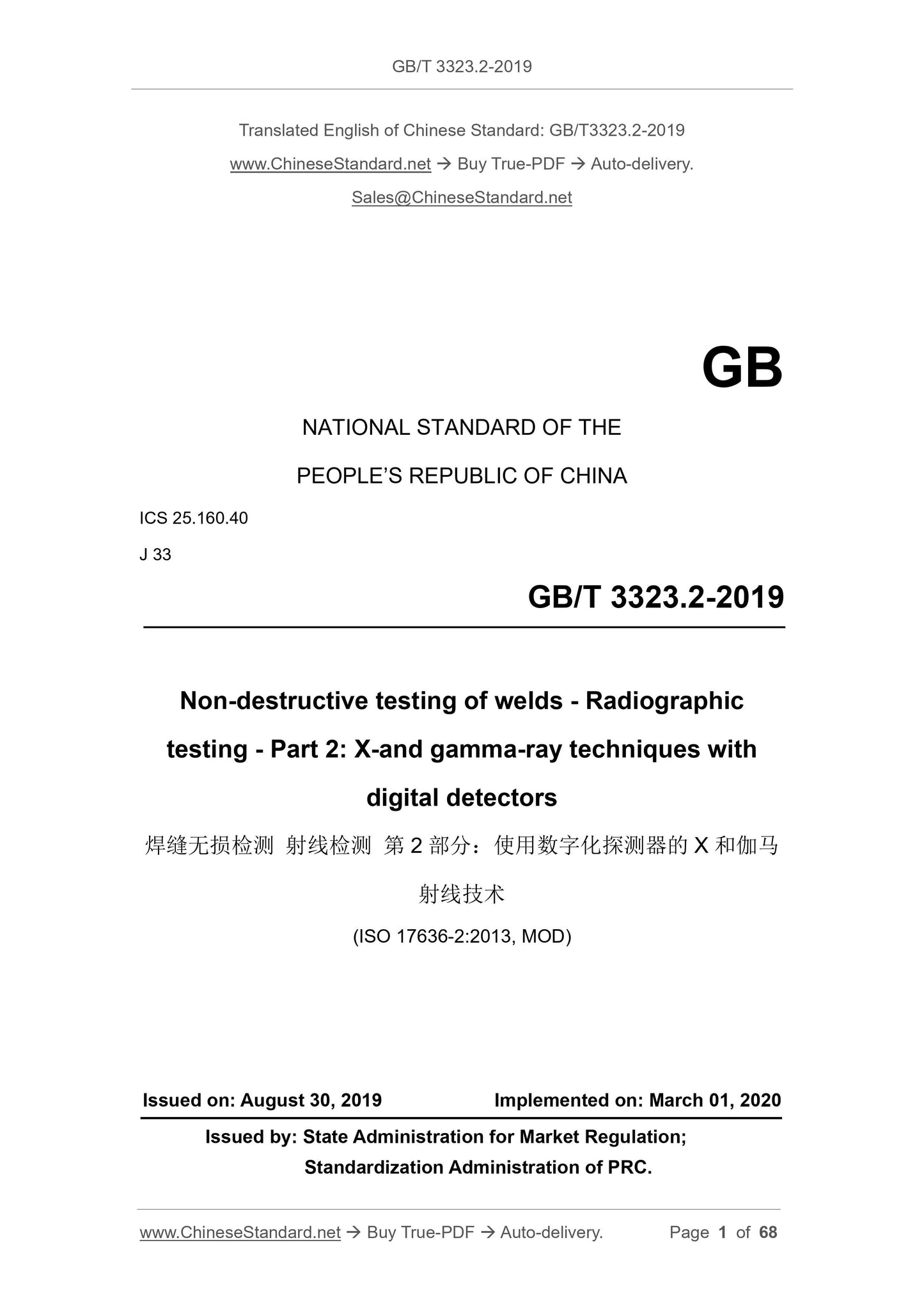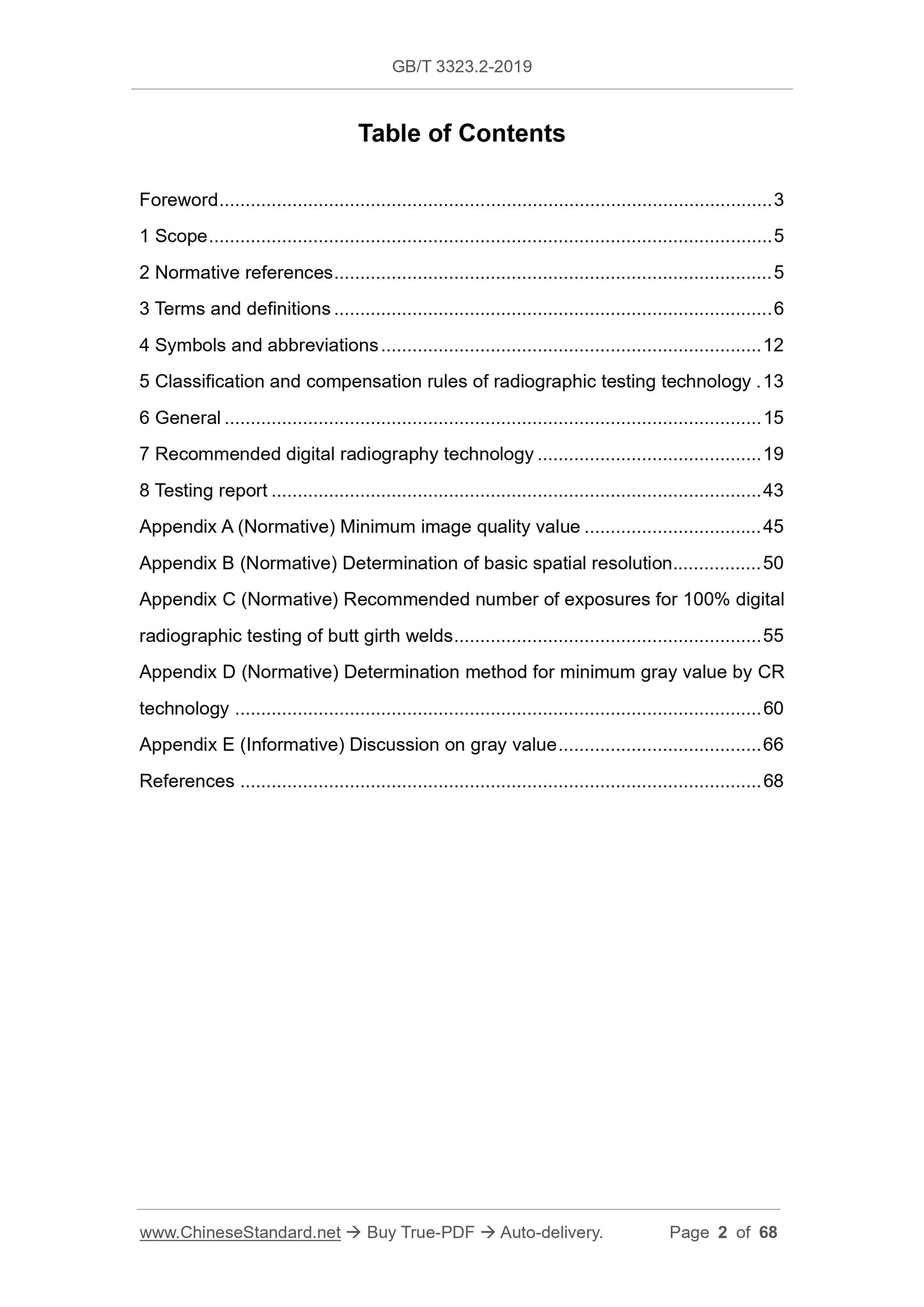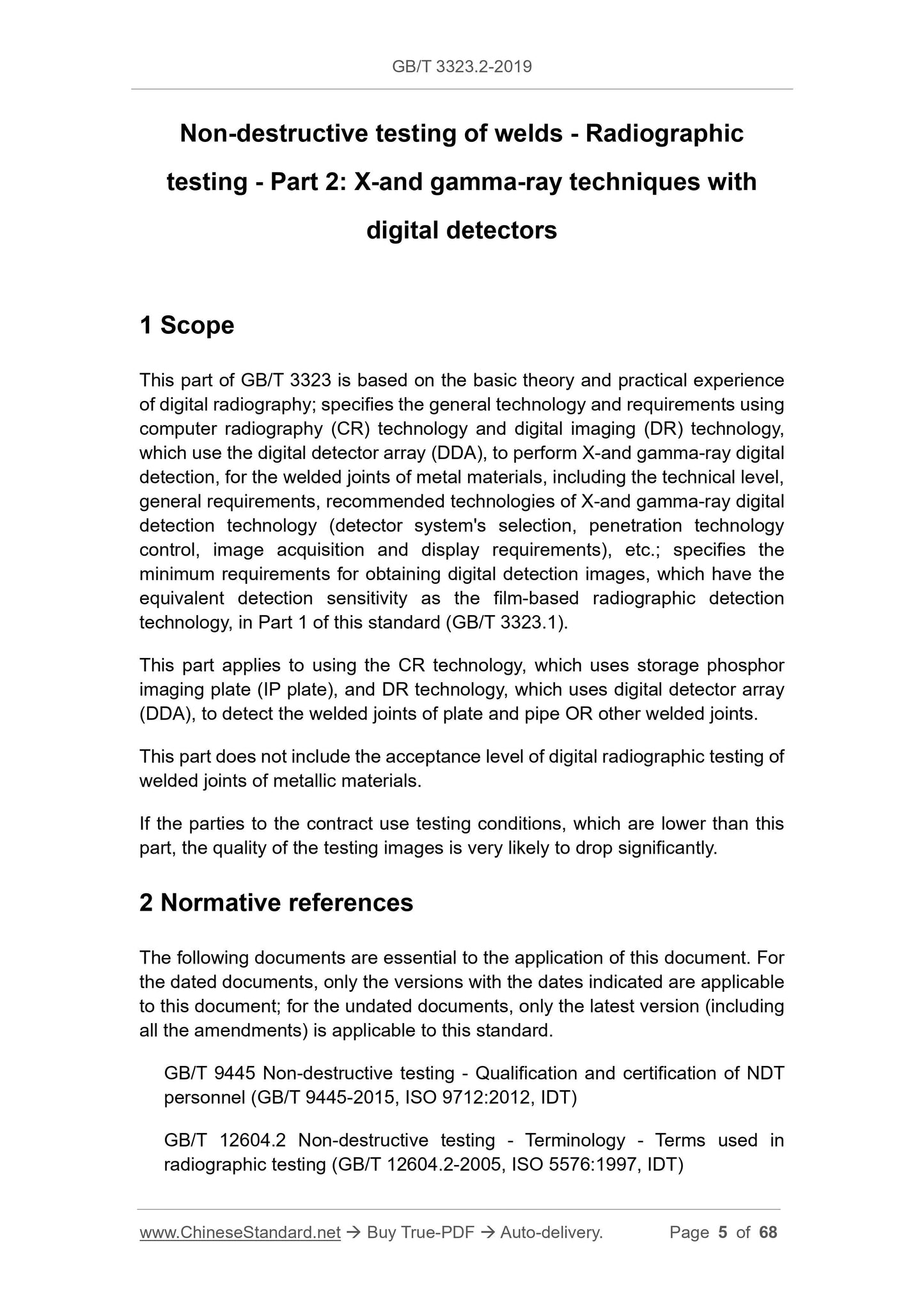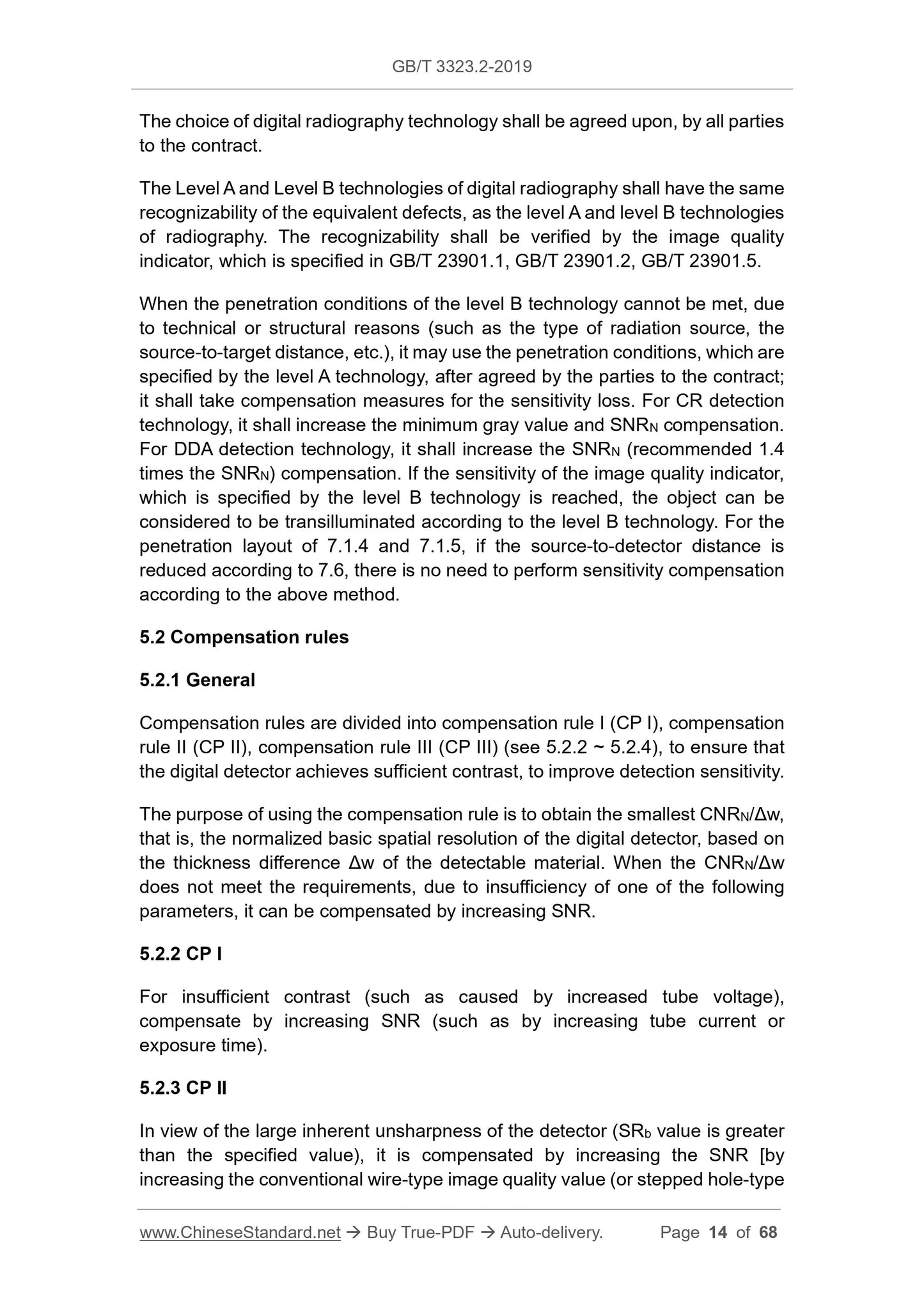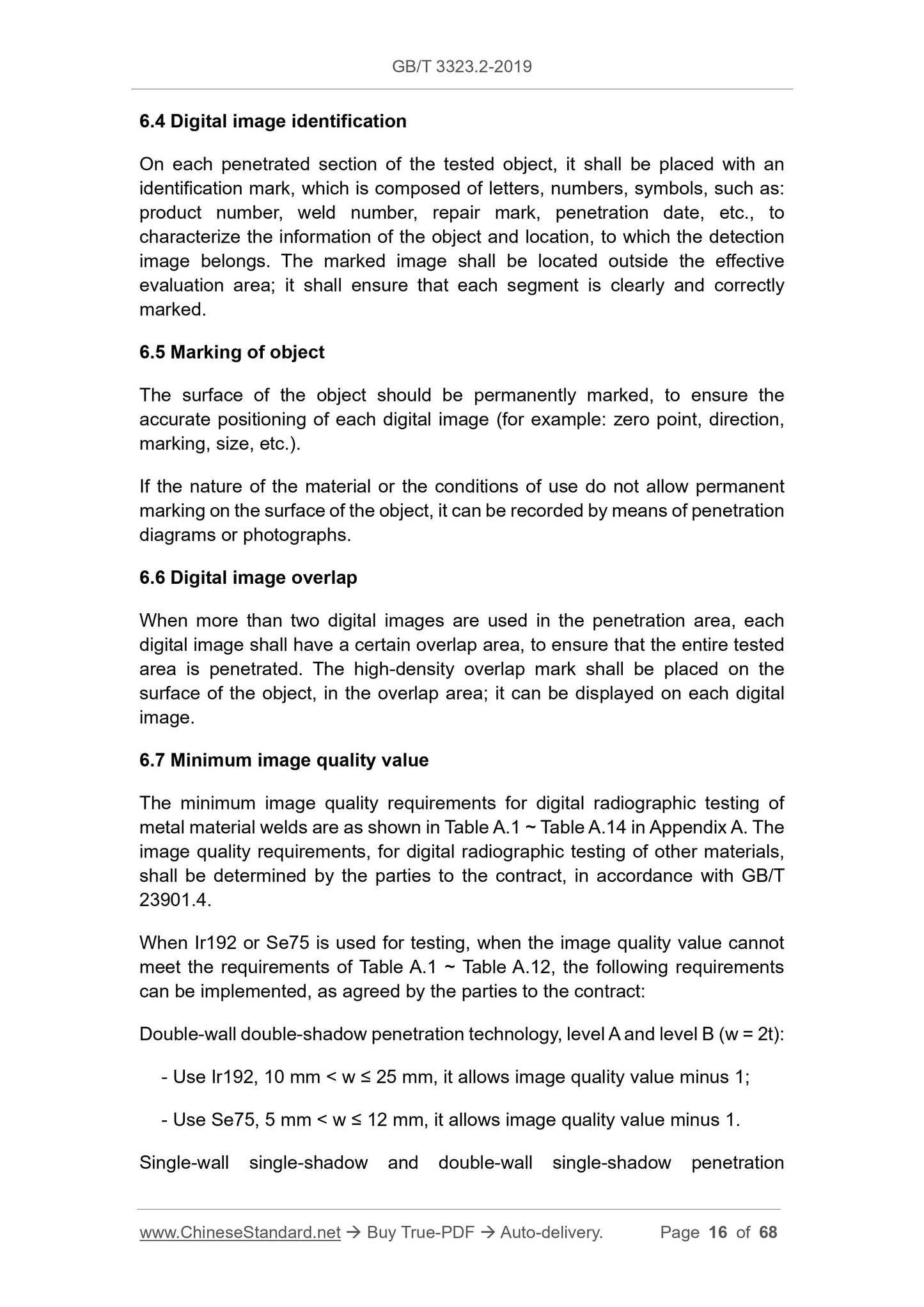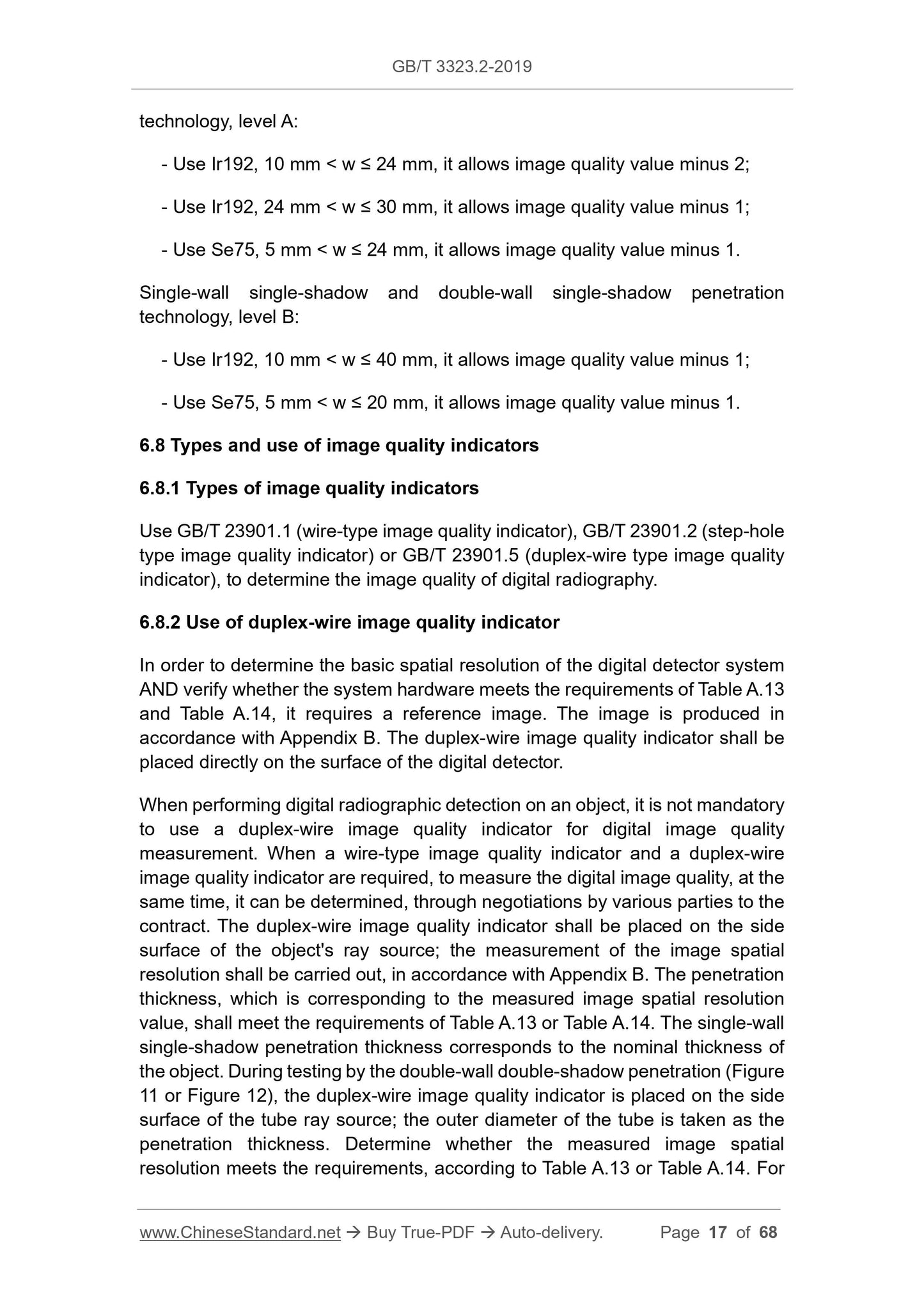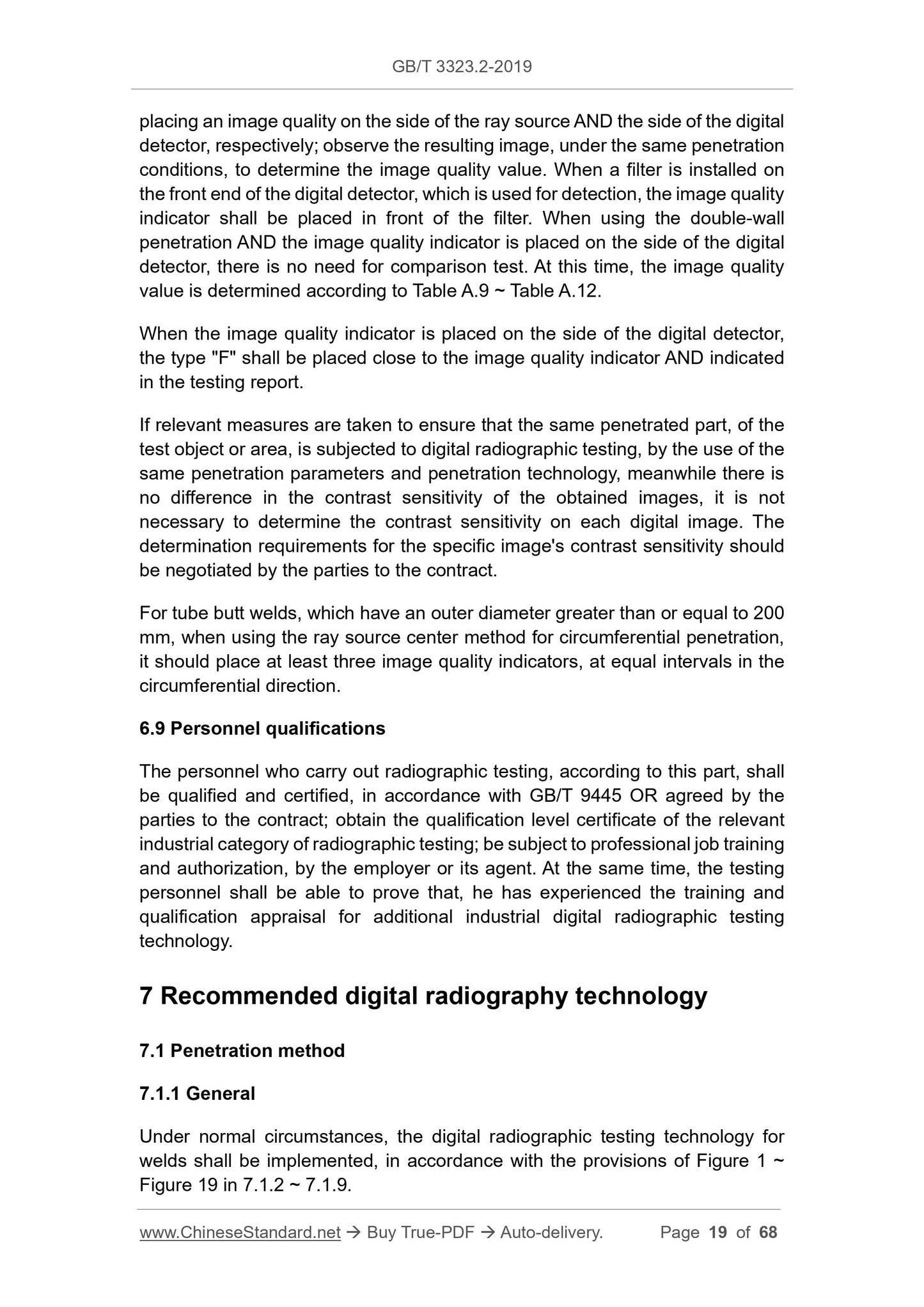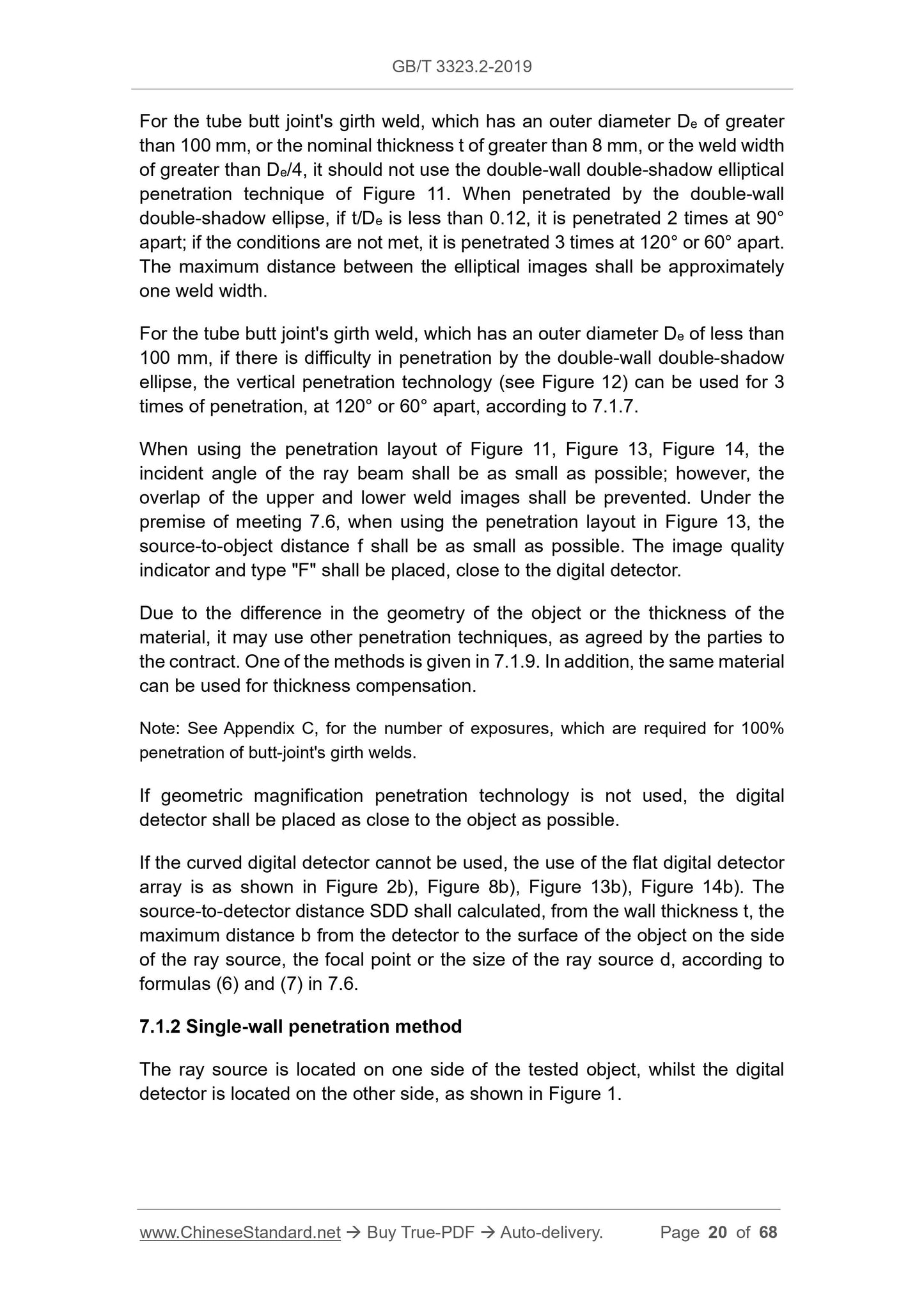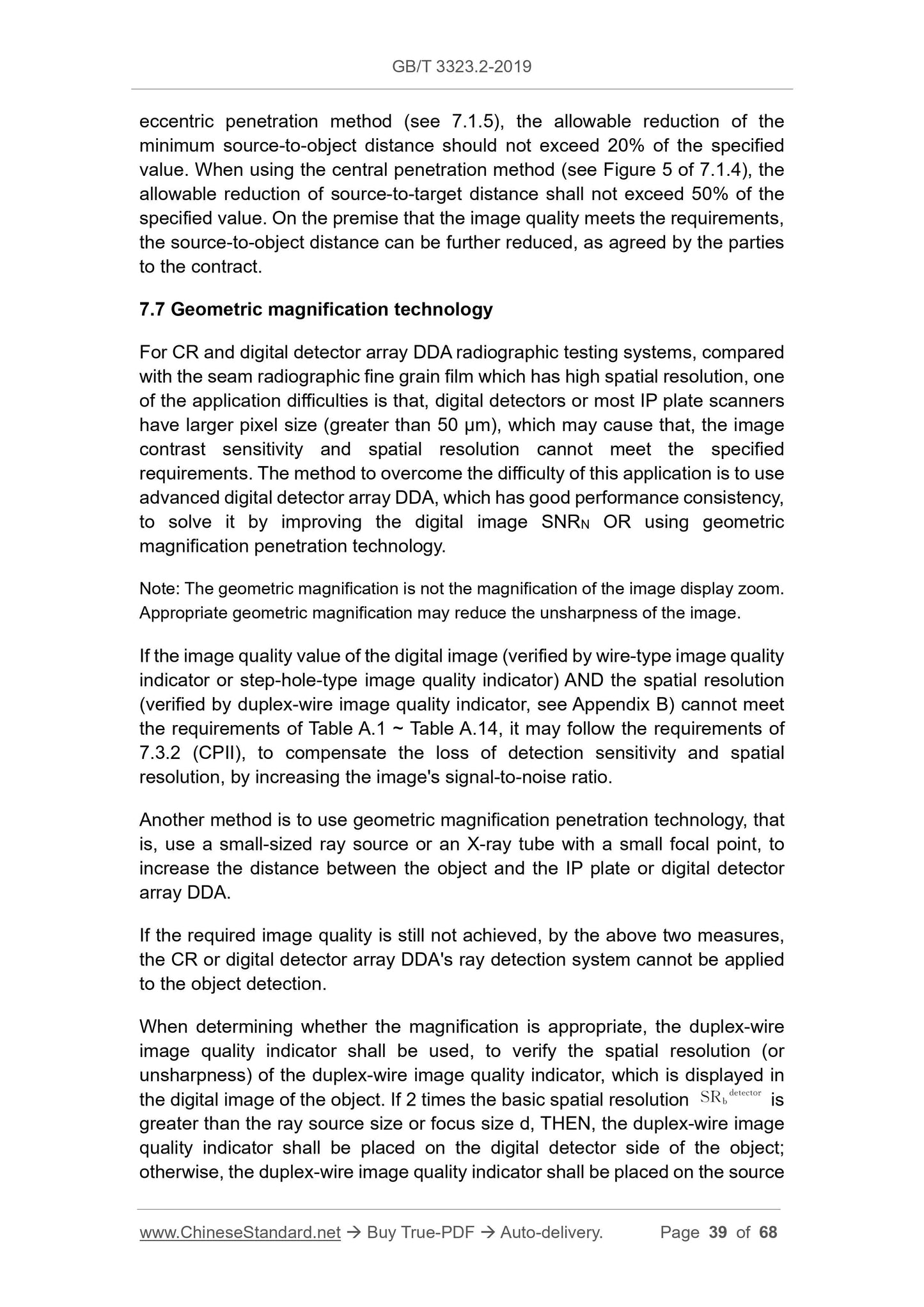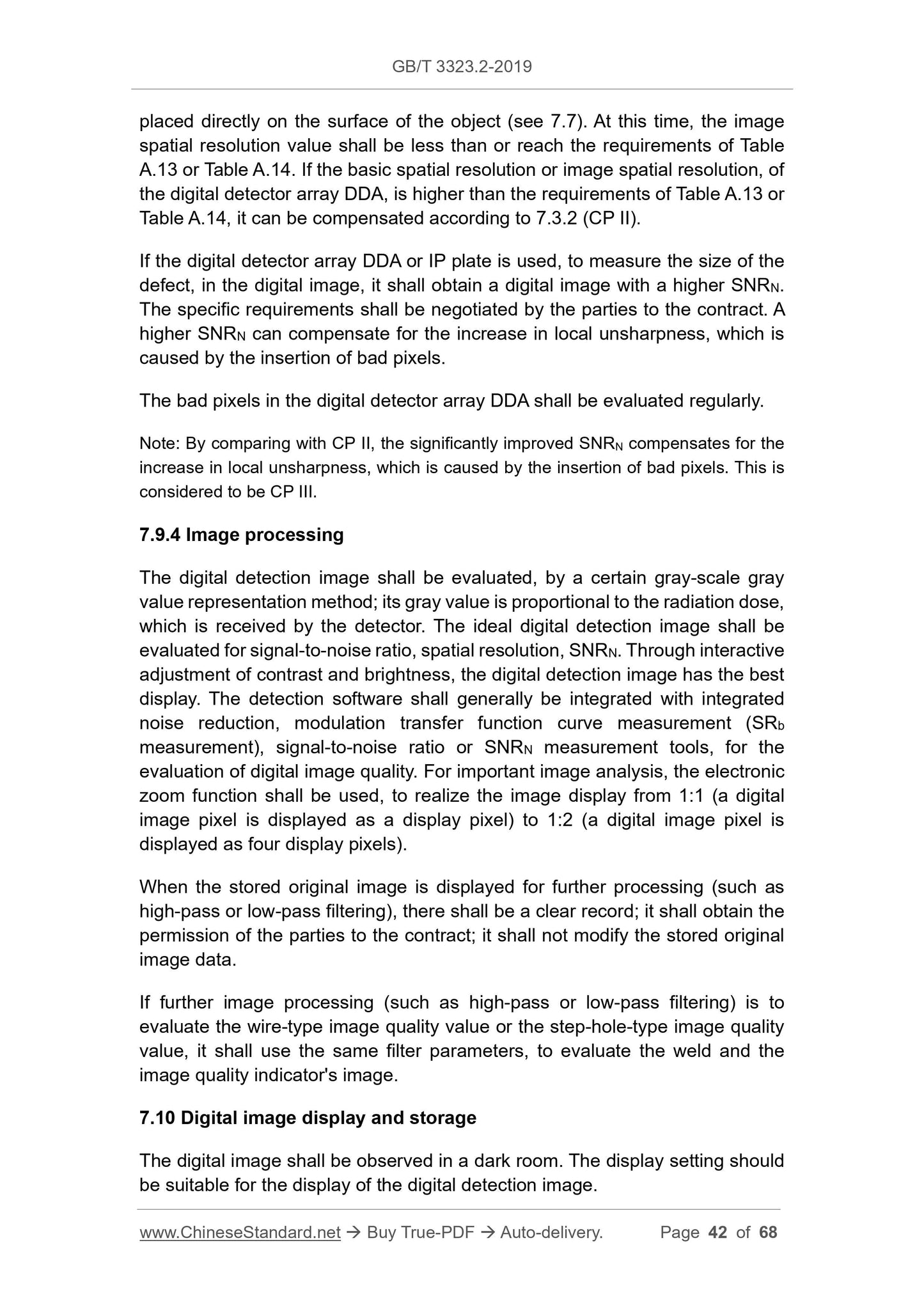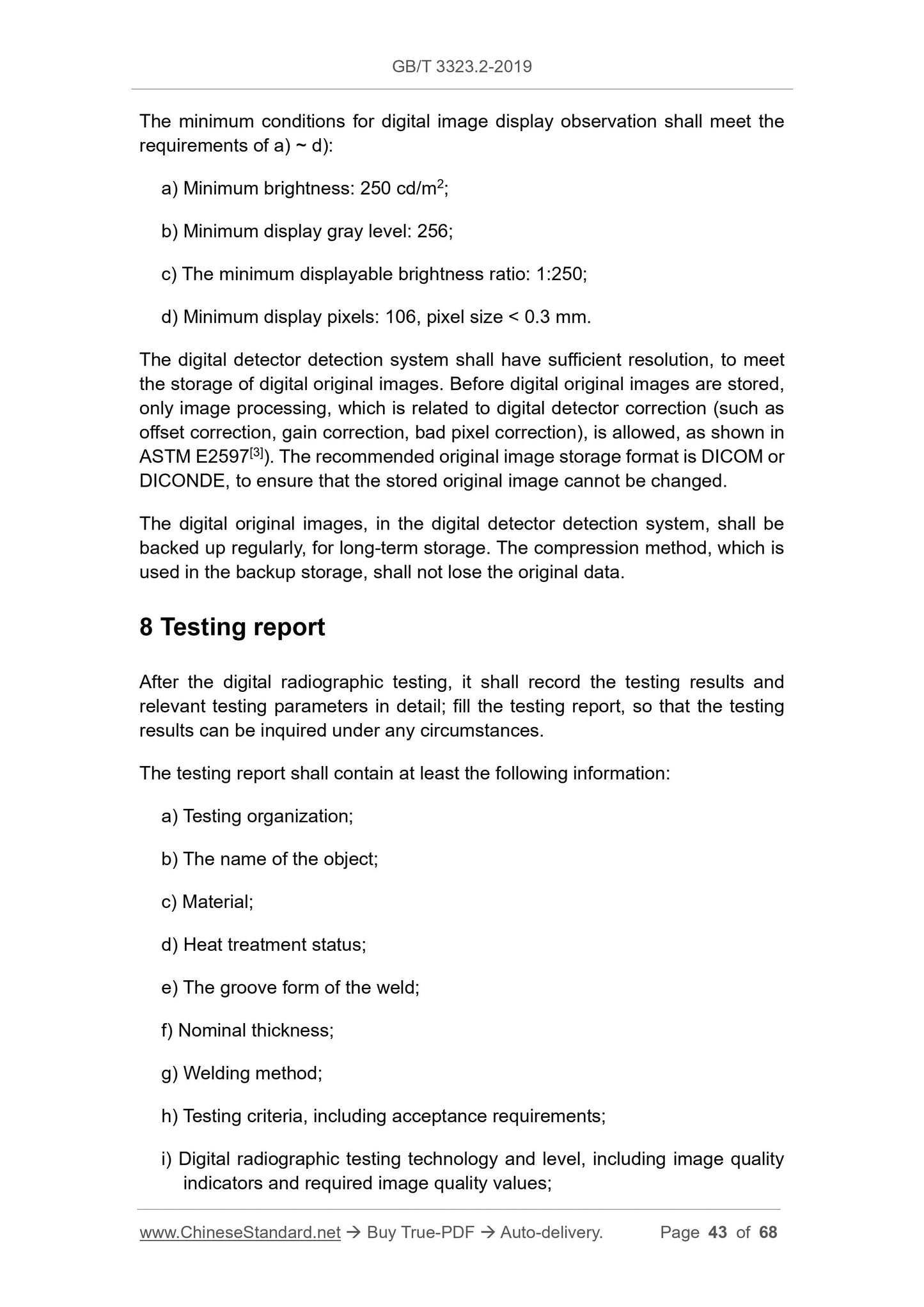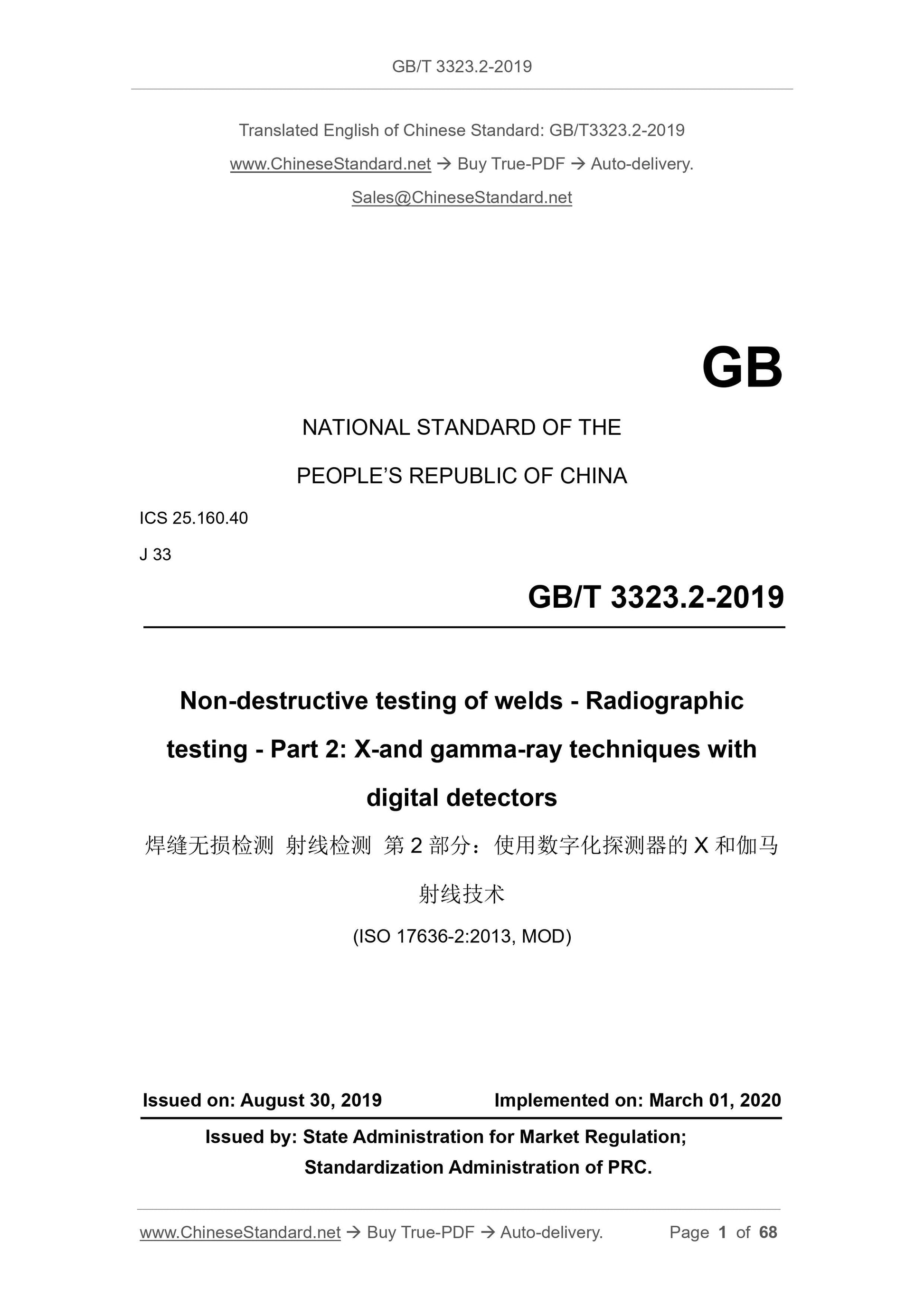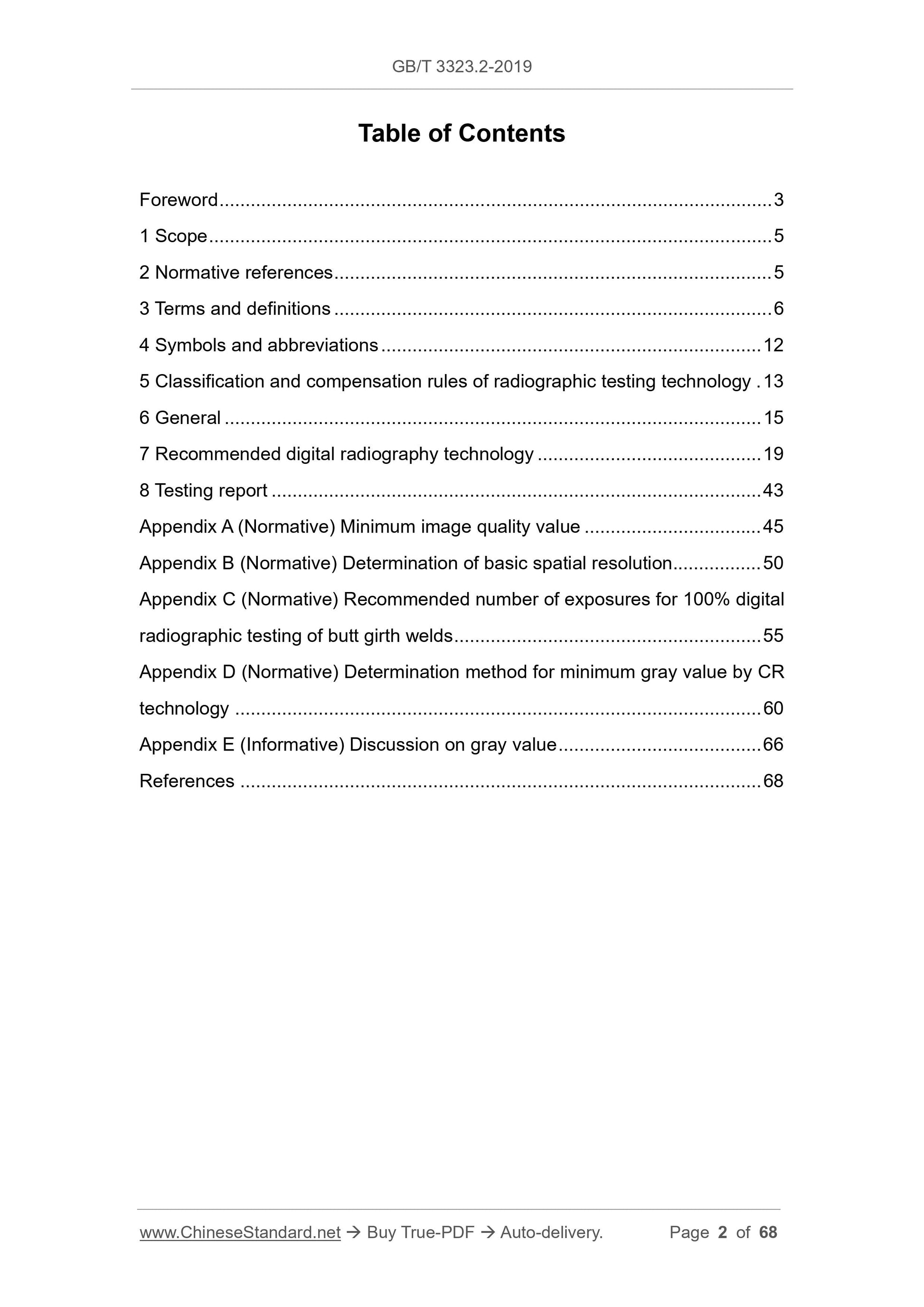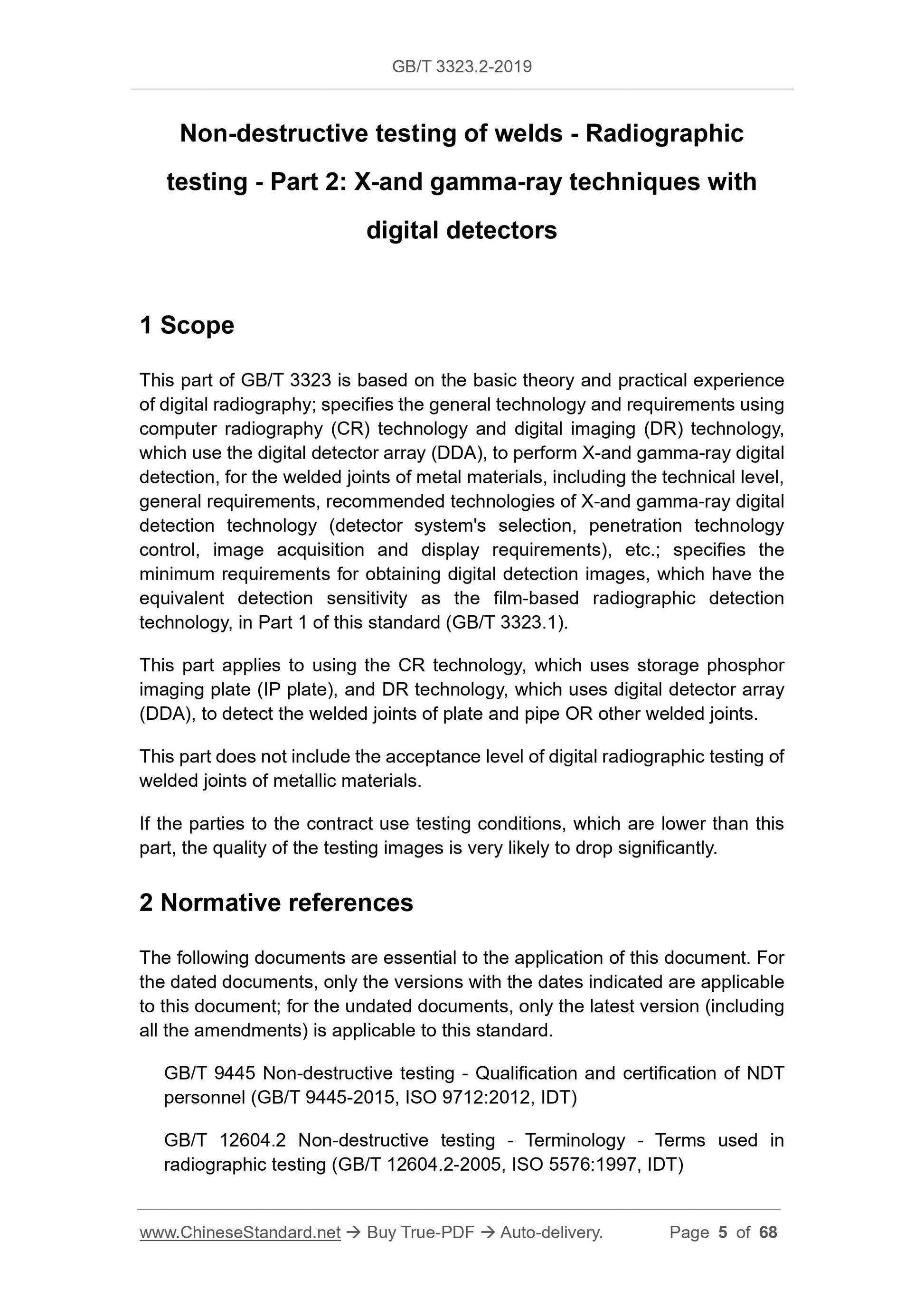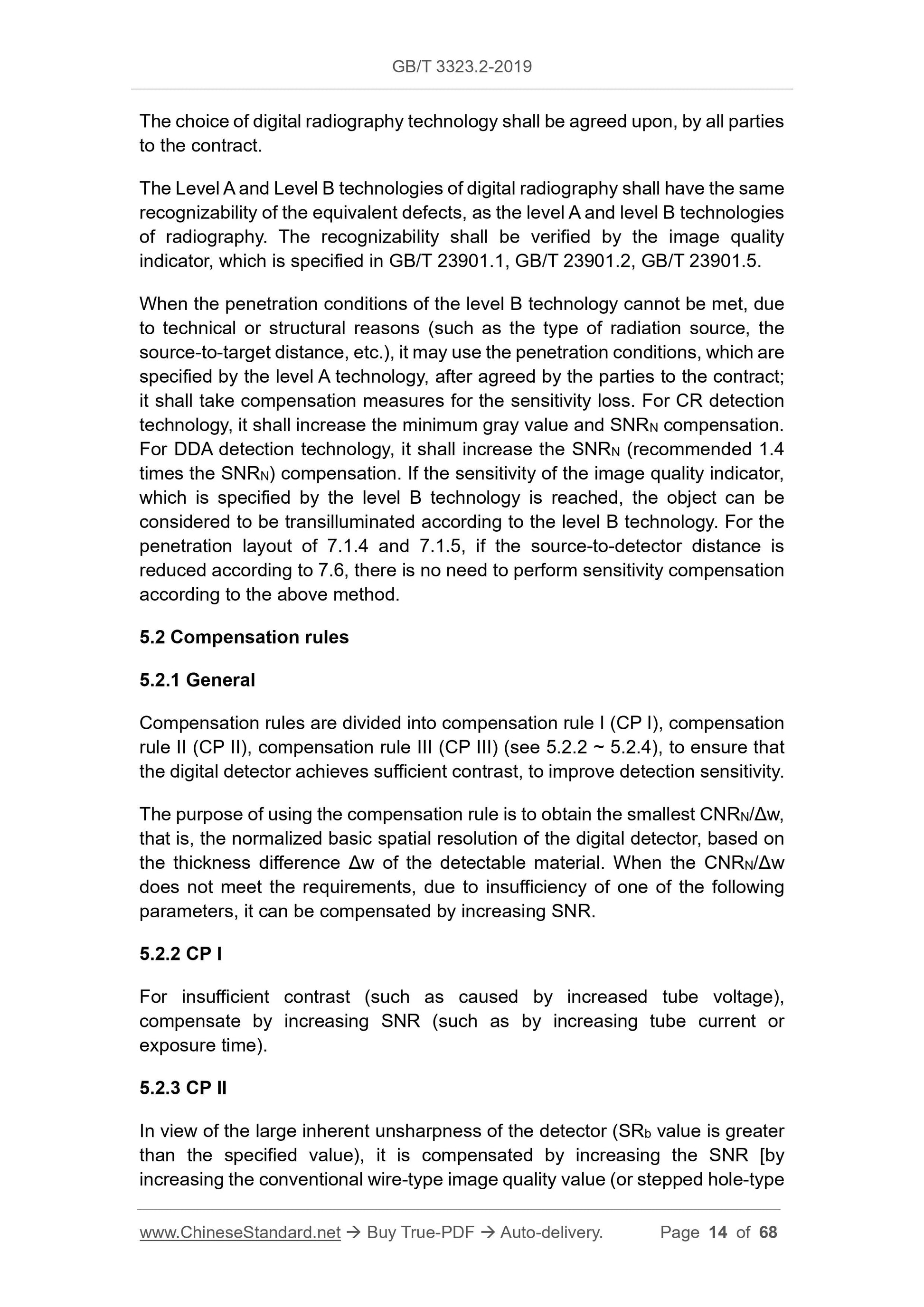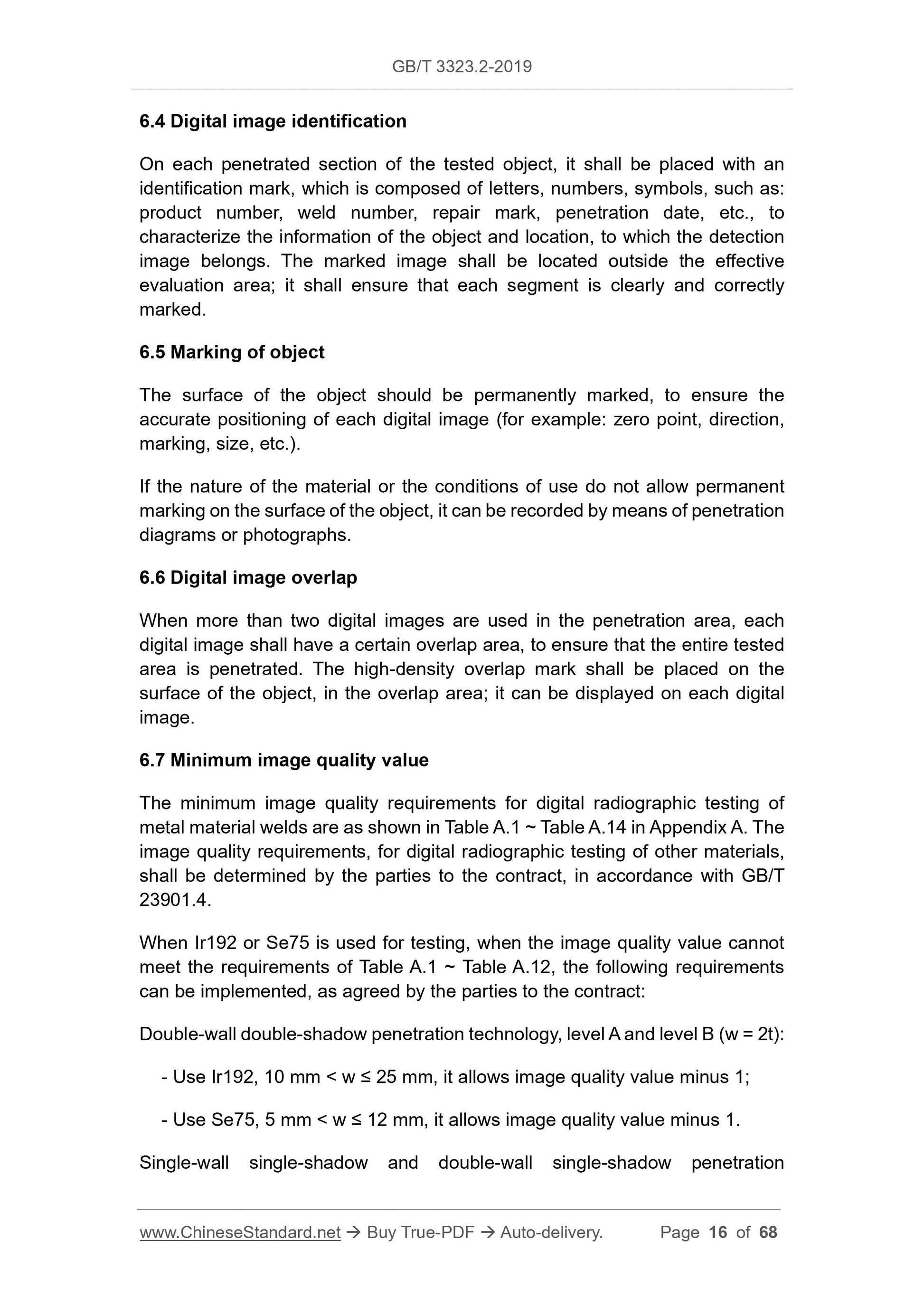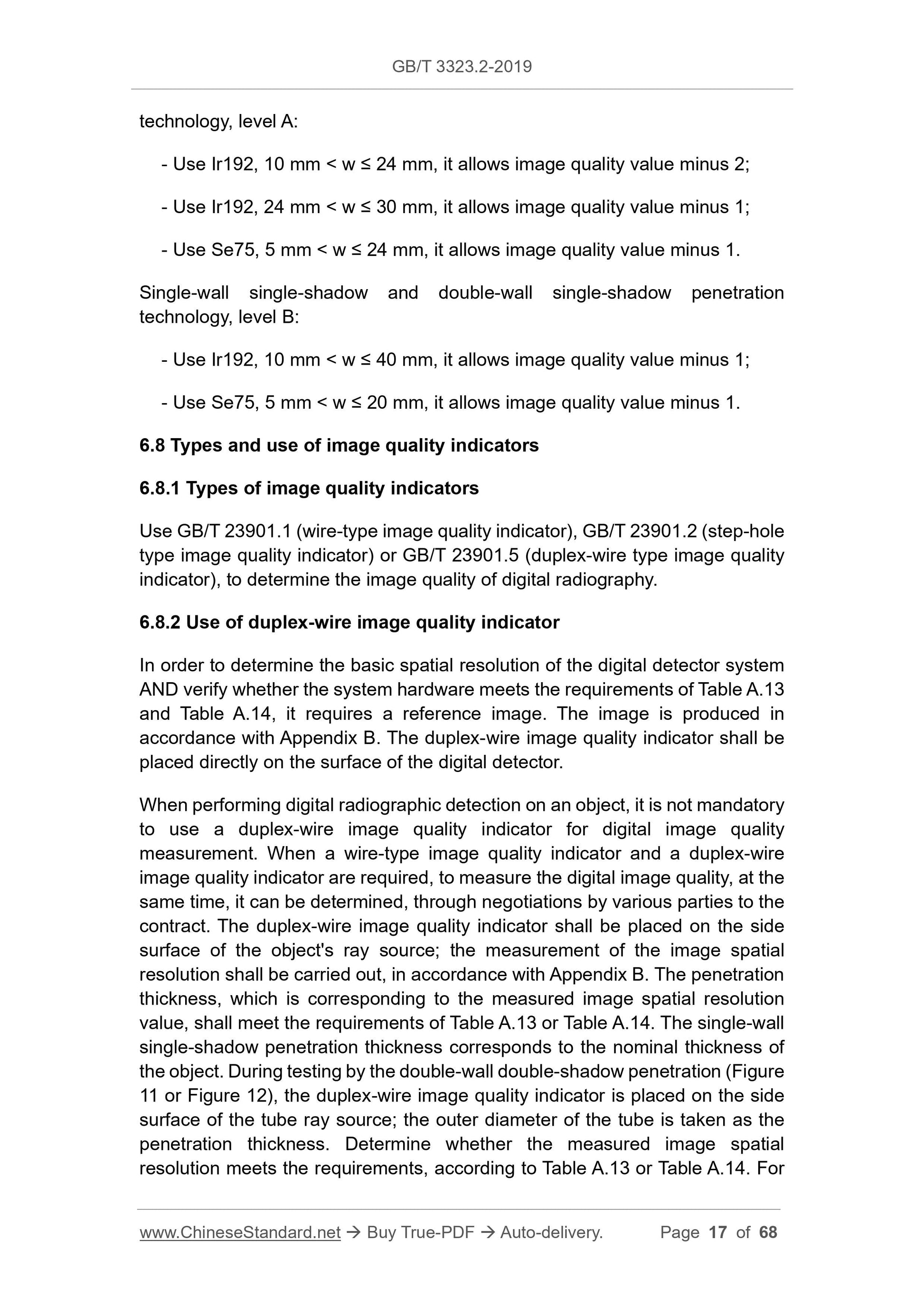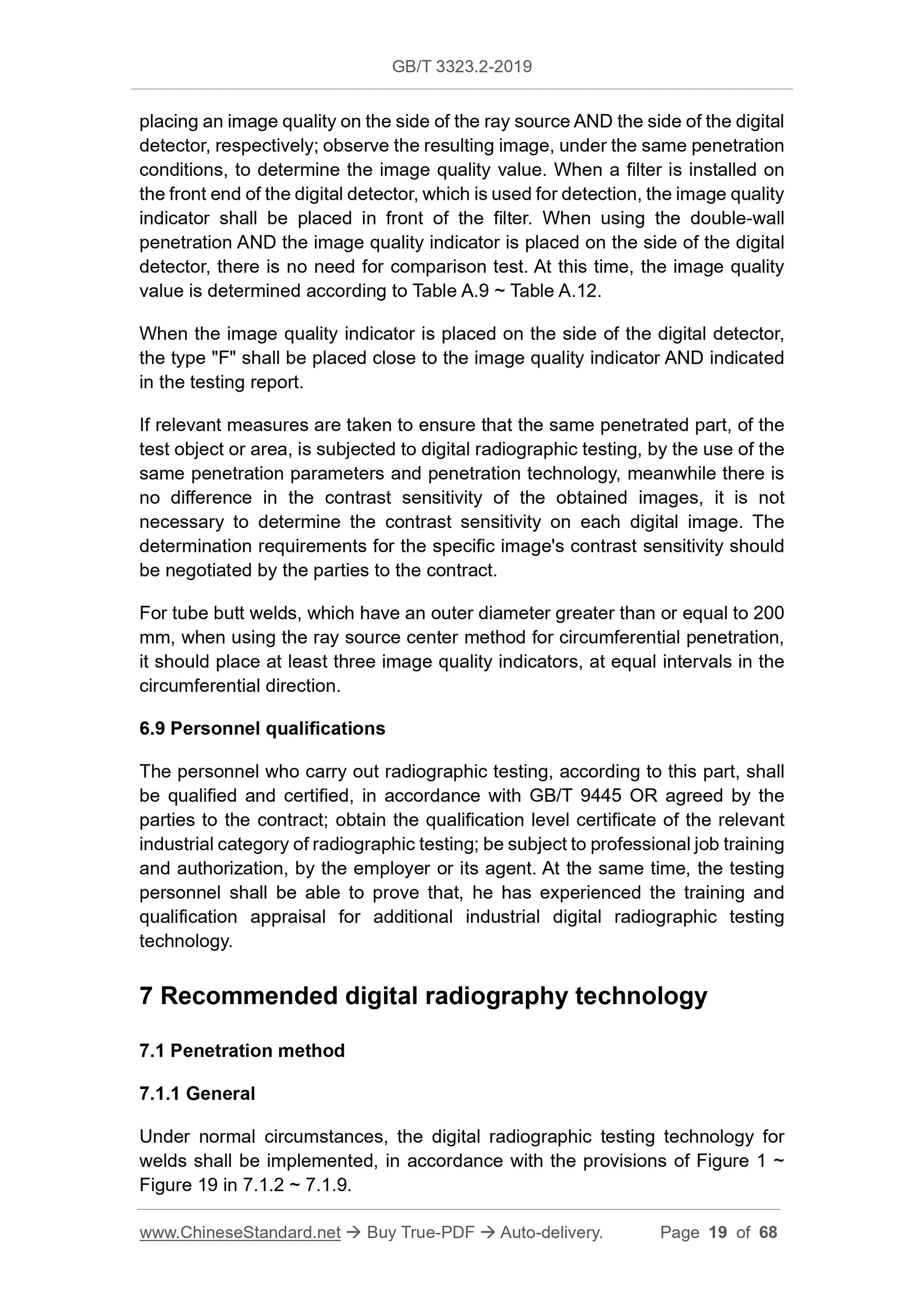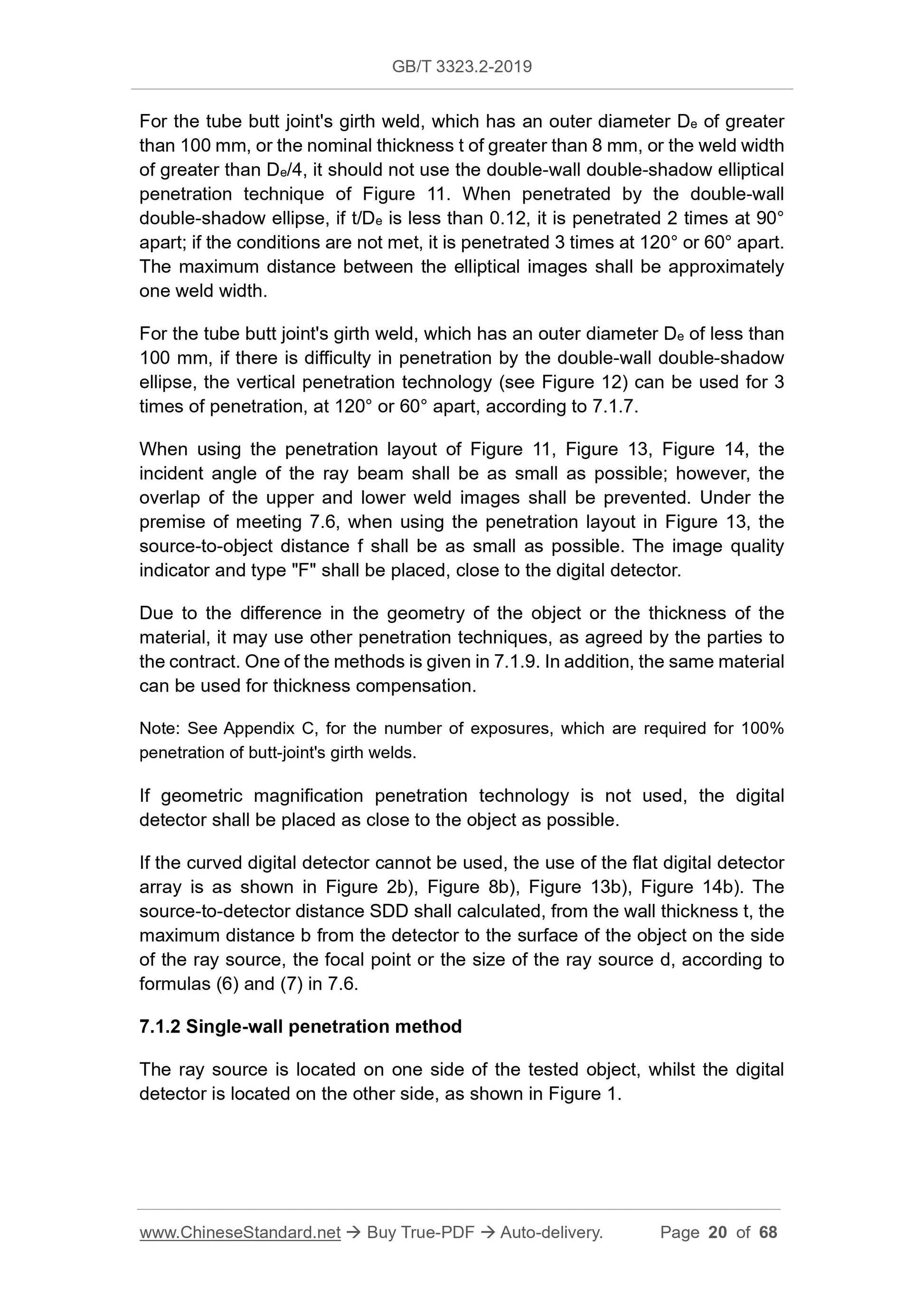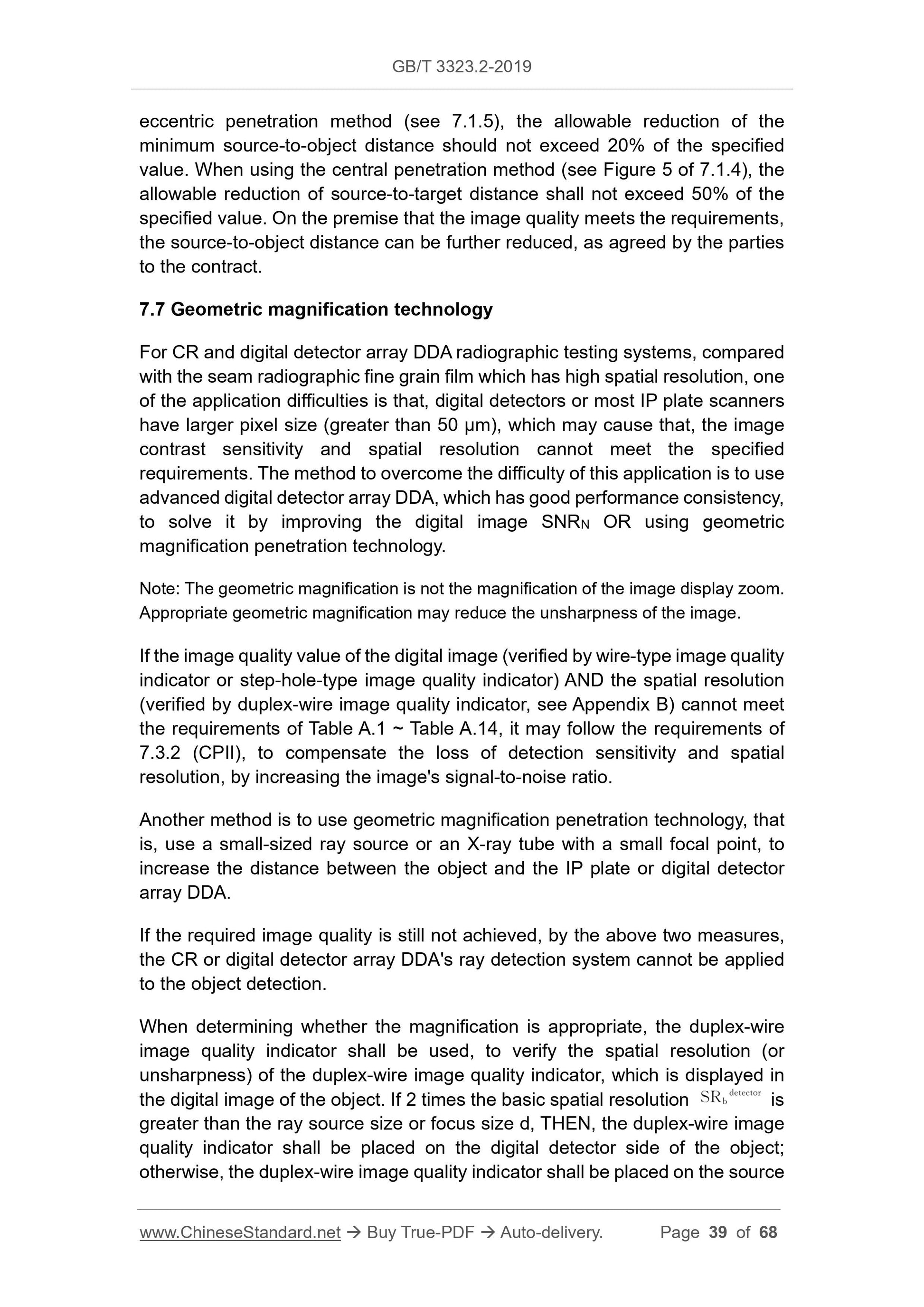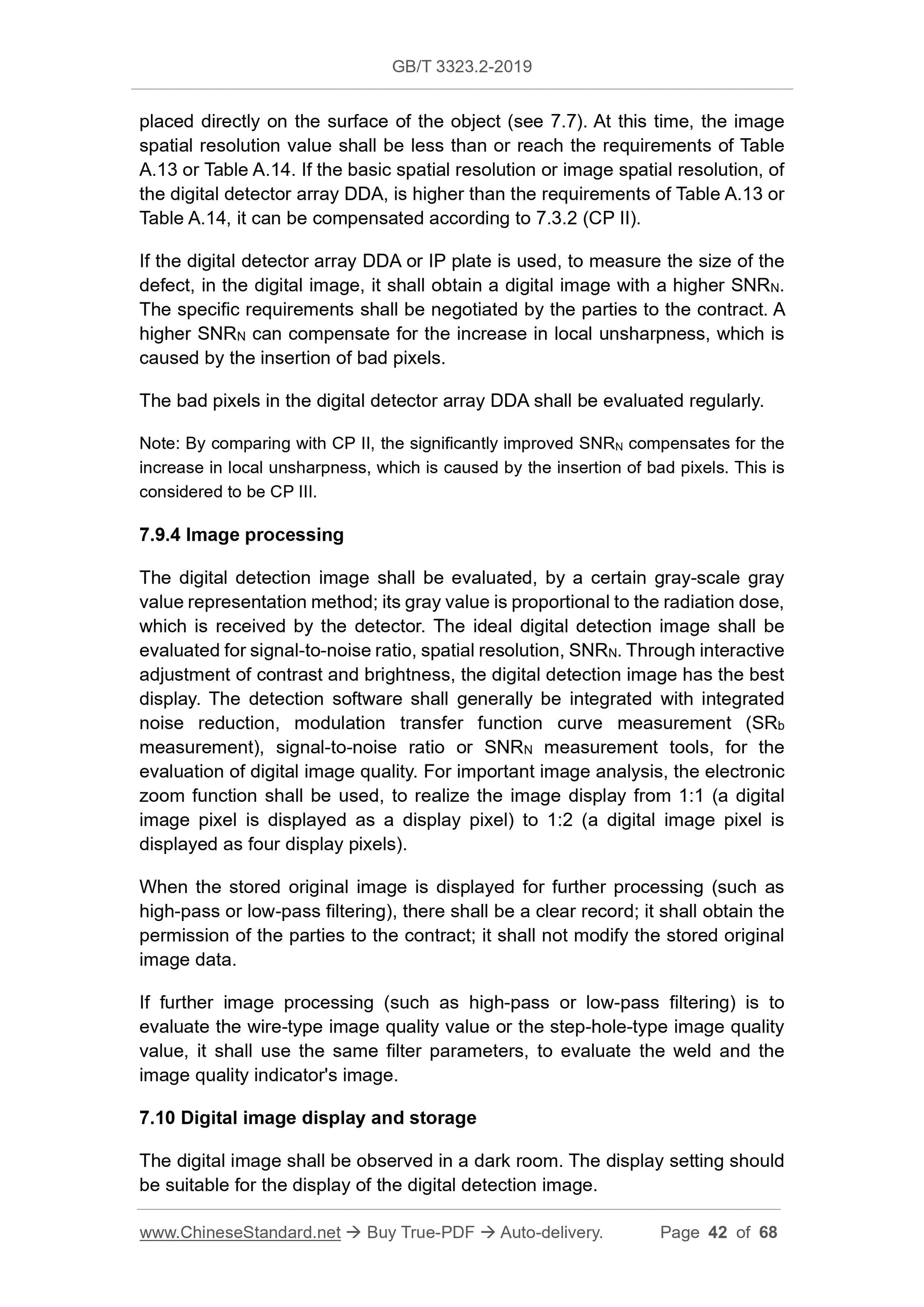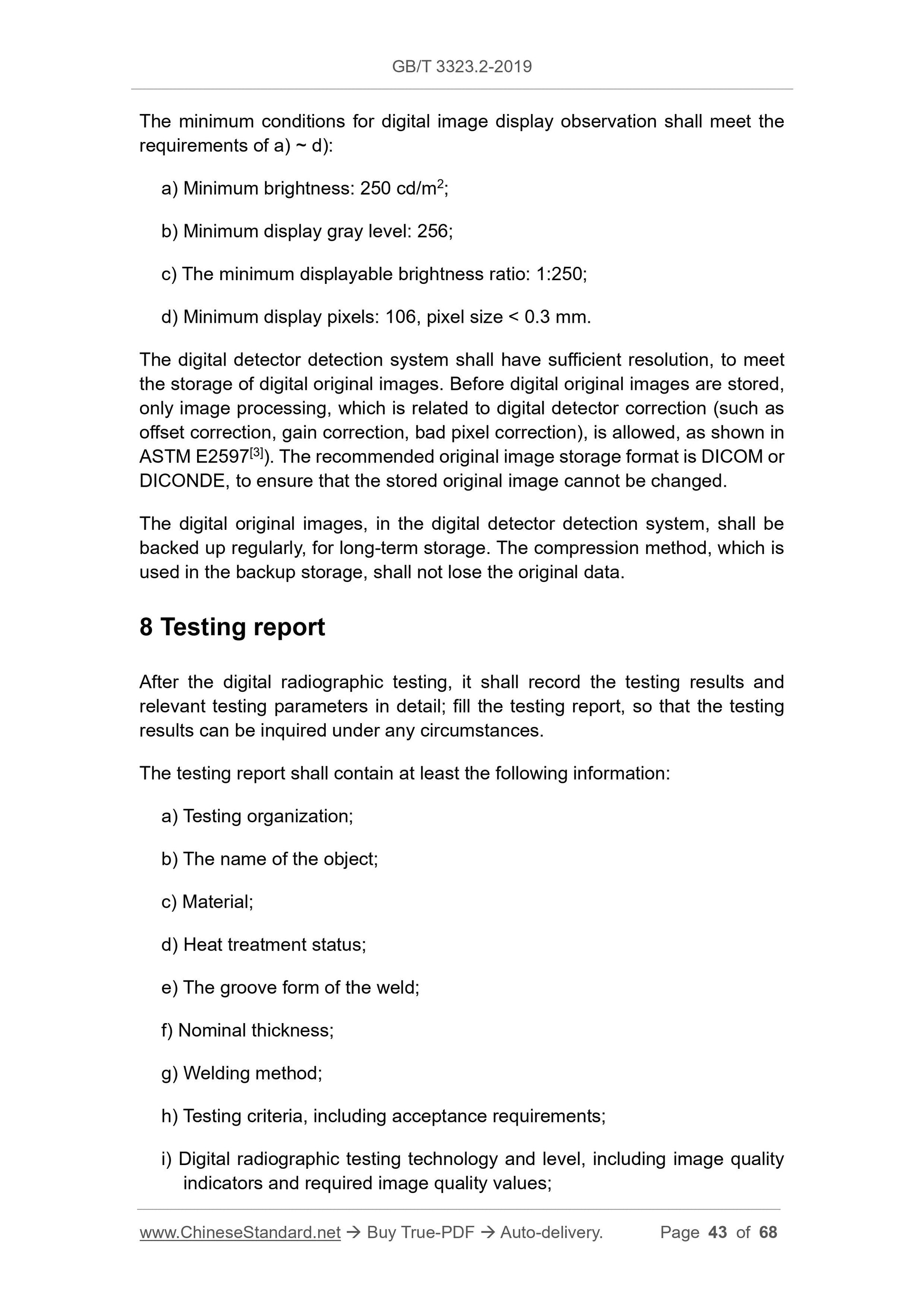1
/
of
11
www.ChineseStandard.us -- Field Test Asia Pte. Ltd.
GB/T 3323.2-2019 English PDF (GB/T3323.2-2019)
GB/T 3323.2-2019 English PDF (GB/T3323.2-2019)
Regular price
$640.00
Regular price
Sale price
$640.00
Unit price
/
per
Shipping calculated at checkout.
Couldn't load pickup availability
GB/T 3323.2-2019: Non-destructive testing of welds -- Radiographic testing -- Part 2: X-and gamma-ray techniques with digital detectors
Delivery: 9 seconds. Download (and Email) true-PDF + Invoice.Get Quotation: Click GB/T 3323.2-2019 (Self-service in 1-minute)
Newer / historical versions: GB/T 3323.2-2019
Preview True-PDF
Scope
This part of GB/T 3323 is based on the basic theory and practical experienceof digital radiography; specifies the general technology and requirements using
computer radiography (CR) technology and digital imaging (DR) technology,
which use the digital detector array (DDA), to perform X-and gamma-ray digital
detection, for the welded joints of metal materials, including the technical level,
general requirements, recommended technologies of X-and gamma-ray digital
detection technology (detector system's selection, penetration technology
control, image acquisition and display requirements), etc.;
Basic Data
| Standard ID | GB/T 3323.2-2019 (GB/T3323.2-2019) |
| Description (Translated English) | Non-destructive testing of welds -- Radiographic testing -- Part 2: X-and gamma-ray techniques with digital detectors |
| Sector / Industry | National Standard (Recommended) |
| Classification of Chinese Standard | J33 |
| Classification of International Standard | 25.160.40 |
| Word Count Estimation | 50,590 |
| Date of Issue | 2019-08-30 |
| Date of Implementation | 2020-03-01 |
| Issuing agency(ies) | State Administration for Market Regulation, China National Standardization Administration |
Share
